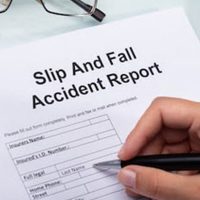Is A Building Code Violation Proof Of A “Dangerous Condition”?

Florida law requires all property owners to keep their premises in a “reasonably safe condition” for invited guests. An owner can be held legally responsible if a “dangerous condition” on the property causes injury to an invited guest. One way to establish the existence of a dangerous condition is a building code violation. In other words, if the guest’s injury was the result of a building code violation, that is considered prima facie evidence of negligence on the part of the owner.
Hotel Faces Slip-and-Fall Lawsuit Over Unbeveled Entryway
The Florida First District Court of Appeals recently addressed this rule. In Dudowicz v. Pearl on 63 Main, Ltd., the plaintiff was a registered guest at the defendant’s hotel. The plaintiff tripped and fell while walking in her hotel room, and she sustained serious injuries in the process. In her subsequent personal injury lawsuit, the plaintiff alleged she tripped over an “unbeveled, 3/8-inch change in elevation between the tiled entryway and the carpeted floor of the hotel room.”
This is an important detail, because the plaintiff alleged this violated applicable building codes. Specifically, state and county building codes incorporated a standard from the National Fire Protection Association, which provides as follows:
Abrupt changes in elevation of walking surfaces shall not exceed 1/4 in. (6.3 mm). Changes in elevation exceeding 1/4 in. (6.3 mm), but not exceeding 1/2 in. (13 mm), shall be beveled with a slope of 1 in 2.
Since the change in elevation in the hotel was between 1/4- and 1/2-inch, the building code required it to be beveled. Since it was not, the plaintiffs argued that provided prima facie evidence of a dangerous condition.
Not surprisingly, the defendant disagreed. It moved for summary judgment, primarily on the grounds that any changes in floor elevation were an “open and obvious” hazard which it could not be held responsible for. The trial court agreed and granted the motion for summary judgment.
The First District reversed, however, noting the defense did not dispute the existence of the building code violation. That was sufficient to survive a motion for summary judgment on a “dangerous condition” claim. Indeed, the plaintiff did not even need to present any expert testimony on this point, as the “plain language” of the building code’s requirement is simple enough for a jury to understand without assistance. And even if the defendant had no “actual knowledge” of the building code violation prior to the accident, the First District said a jury could infer “constructive notice” given the “sufficient length of time” the unbeveled floor had been present in the room. Put another way, had the defendant exercised reasonable care in inspecting its rooms, it would have almost certainly discovered the unbeveled floor and taken corrective action, as required by the building code.
Speak with a Boca Raton Personal Injury Lawyer Today
If you have been injured due to a property owner’s negligence, it is important to speak with an experienced Delray Beach slip and fall accident attorney who can advise you of your legal rights. Contact Leifer & Ramirez today to schedule a free initial consultation.
Source:
scholar.google.com/scholar_case?case=15958949597306273490


